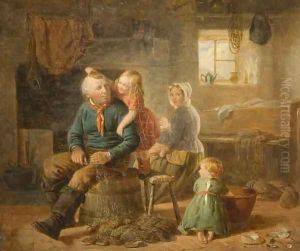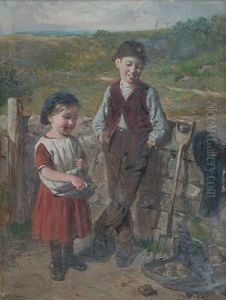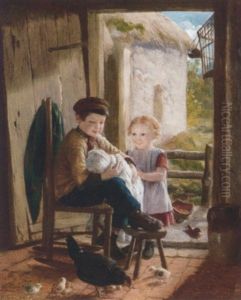William Helmsley Paintings
William Helmsley was a British painter known for his landscapes and rural scenes. Born in 1863, Helmsley's artistic journey began at a young age, influenced by the bucolic surroundings of the English countryside. He developed a keen interest in capturing the essence of rural life and the natural beauty that he observed. His paintings often featured pastoral scenes, farm animals, and country folk, which were rendered with a sense of realism and attention to detail.
Helmsley's work was characterized by its vibrant use of color and light, which he used to convey the different times of day and seasons in his landscapes. He had a particular talent for depicting the textures of foliage and the play of sunlight through trees, which added a lifelike quality to his paintings. Despite the rise of modernist movements in the late 19th and early 20th centuries, Helmsley remained committed to his traditional style, which resonated with audiences who appreciated his depictions of an idyllic English countryside.
While not as widely recognized as some of his contemporaries, Helmsley's work was appreciated by those who favored the pastoral genre. He exhibited his work at various institutions, including the Royal Academy of Arts, which helped to establish his reputation as a landscape painter. His paintings are now held in private collections and occasionally appear in auctions, serving as a testament to the enduring appeal of the rural landscapes he so loved.
William Helmsley passed away in 1937, leaving behind a body of work that continues to be appreciated by art enthusiasts and collectors. His dedication to capturing the beauty of the English landscape has ensured his place in the annals of British art history, particularly within the genre of landscape painting.











